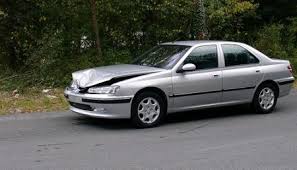
A recent New Jersey Appeals Court case said that contact between a defendant driver’s vehicle and the victim is not a necessary element of the second-degree crime of leaving the scene of a fatal accident under New Jersey Law.
The case, State v. Sene, involved an accident that lead to the death of a pedestrian. The defendant taxi driver, Jean Sene, was driving alongside, but slightly ahead, of a jitney bus. The victim pedestrian was crossing the street as the two vehicles were approaching and she was either hit by the taxi and fell backwards or dodged the taxi and fell backwards. She was then run over by the jitney bus.
Immediately after the accident, the jitney bus driver pulled over and called the police but Sene kept driving, parked his car at the next street and walked back to the accident scene. Although he returned, he did not speak to anyone and left after a few minutes. The police were about to identify Sene’s taxicab from the jitney bus dashboard camera that recorded the accident. At trial, the judge instructed the jury on the elements to consider in “Leaving the Scene of an Accident Resulting in Death” and told them that contact was not one of the necessary elements. The jury returned a guilty verdict against Sene.
On appeal, Sene claimed that the trial court made a mistake and he should not have been be found guilty of the crime, since his vehicle did not make contract with the victim. New Jersey law makes it a second-degree crime for drivers who know they are involved in an accident to knowingly leave the scene if the accident results in death. The appeals court was not convinced by Sene’s reading of the law and instead decided that the law means that “a driver whose actions contribute to an accident, and who knows of the causal relationship, must not leave the scene of the accident.”
Some other examples of when a driver cannot leave the scene of the accident? When Car A hits Car B, which then hits and kills a pedestrian. Or when Car A hits a light pole, which then falls and kills a pedestrian. In both situations, car A does not make direct contact with the victim. But it is undeniable that Car A was involved in the accidents. To be sure, drivers who believe they might have just been involved in an accident, even if they did not make contact with another person or object, should not leave the scene. With the collaboration of Kieu-Nhi Le, Rutgers School of Law Newark candidate for a JD degree in May 2016. She is the Managing Business Editor of the Rutgers Computer and Technology Law Journal.

